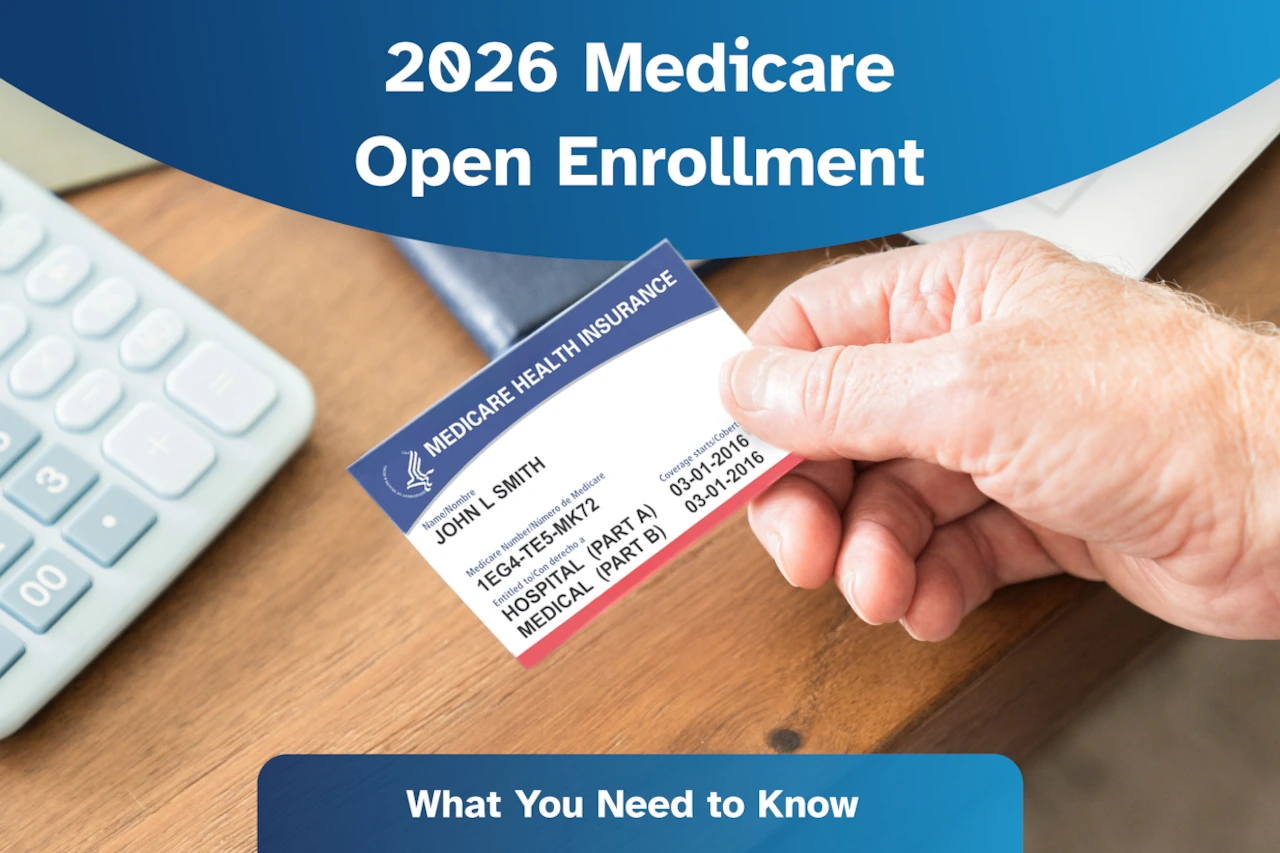
Insights from AmeriPharma Specialty’s Billing and Insurance Coverage Support Team
If you’re on a specialty medication like IVIG, TPN, oncology, or biologics, the 2026 open enrollment period is one of the most important windows of the year to review your insurance plan.
At AmeriPharma Specialty Care, our team supports thousands of patients across Medicare, Marketplace, and commercial insurance plans. Each year, we help patients avoid coverage gaps, uncover assistance opportunities, and resolve issues that could have been prevented with earlier planning.
This guide shares the top questions we hear, the most common mistakes we see, and what you need to know to protect your access to treatment in 2026.
| We guide. You decide. |
| AmeriPharma helps you understand how your therapy is covered and where to look for financial assistance. AmeriPharma is not an insurance agent, and we do not recommend specific plans. |
Key Open Enrollment Dates (for 2026 Coverage)
- Medicare (AEP):
Oct 15 – Dec 7, 2025
Changes take effect Jan 1, 2026 - ACA Marketplace Plans:
Nov 1, 2025 – Jan 15, 2026
Enroll by Dec 15 for Jan 1 coverage; Dec 16–Jan 15 for Feb 1 - Employer Plans:
Dates vary, but most are in October–December
How to Compare Plans for Specialty Therapies
1. Ask These Three Questions First
Every year, we speak to patients who chose plans based on monthly premiums — only to discover that their medication isn’t covered, or they’re locked into a pharmacy that can’t meet their needs.
Before selecting any plan, we recommend confirming these three things:
- Is my medication on your formulary? What tier is it?
- Do I have to use a specific specialty pharmacy? If yes, can I request an exception?
- For Medicare Advantage plans: Does my provider work with the specified plan?
These three answers affect access, cost, and whether your prescriber and preferred specialty pharmacy can support you. Too often, patients skip this step—only to discover later that their plan won’t allow them to use their preferred pharmacy, or that starting treatment will be delayed while a new pharmacy is arranged.
2. Look at the Whole Cost — Not Just the Premium
Each year during open enrollment, we see patients choose plans with the lowest monthly premium, thinking they’re saving money — only to be surprised by higher out-of-pocket costs, pharmacy restrictions, or treatment delays once the year begins.
The reality is: A low premium doesn’t always mean a low total cost—especially if you’re on a specialty therapy.
What To Ask When Comparing Plans
To get the full picture, ask the plan to help you estimate your total yearly cost, including:
- Monthly premium — what you pay each month
- Annual deductible — what you must pay before coverage begins
- Copays or coinsurance — for your specific medication
- Out-of-pocket maximum — the most you’ll pay in a year before the plan pays 100% (For Medicare Part D: $2,100 in 2026)
These numbers vary significantly between plans—and even small differences can add up quickly when you’re managing high-cost medications.
What We See Go Wrong
- Patients thinking they must use their plan’s preferred specialty pharmacy: This is one of the most common misconceptions. When patients enroll in a new plan, they often receive letters stating they must use the plan’s preferred specialty pharmacy. Many assume this is mandatory and may even request to cancel their service with the existing specialty pharmacy — believing their plan “requires” it. In reality, this is rarely the case. Patients usually have the right to choose their specialty pharmacy and should feel empowered to speak up about who they want to provide their care.
- 50/50 coinsurance with no max: You pay half the drug cost indefinitely, with no cap on your spending.
- High deductibles: You may owe thousands up front before coverage begins.
- Mandated or excluded pharmacies: You could be forced to switch pharmacies or lose access entirely.
- Delays from insurance approvals or site-of-care rules: Added steps can delay or block time-sensitive treatments.
When a Higher Premium Makes Sense
Sometimes, paying more per month gives you:
- Better cost-sharing (like 80/20 instead of 50/50)
- Lower coinsurance for infusions or injectables
- Access to your preferred specialty pharmacy
- Faster approvals with fewer administrative hurdles
Key Takeaway
Don’t shop by premium alone. Look at your total annual costs for your therapy and choose a plan that supports your therapy during Medicare open enrollment, minimizes delays, and keeps your out-of-pocket costs predictable.
3. Understand Plan Types
Some plans may restrict where you can get your treatment or how it’s billed:
| Plan Type | What to Know |
| HMO | Low flexibility. You must stay in-network. Often hard for specialty meds. |
| EPO | Similar to HMOs. Strict networks, no out-of-network options. |
| PPO | More flexible. May allow out-of-network care and pharmacy exceptions. |
| Medicare Advantage (Part C) | One card for A, B & D, but may limit access to preferred pharmacies or sites of care. |
| Original Medicare + Medigap + Part D | Often best for specialty therapies. Medigap covers the 20% coinsurance under Part B but does not cover any out-of-pocket expenses under Part D. |
4. Confirm How Your Therapy Is Billed
Ask the plan whether your medication is billed under:
- Pharmacy Benefit (e.g., Part D or commercial pharmacy):
Covers most self-administered drugs or some specialty meds. OON options are sometimes available. - Medical Benefit (e.g., Part B or commercial medical):
Applies to many infused therapies like IVIG, TPN, and oncology treatments. Coverage rules vary and may require strict network use or prior authorization.
Understanding how your therapy is billed can help avoid surprises with network status, authorizations, and costs.
Medicare: What’s New in 2026
Medicare Part D: Out-of-Pocket Cap
In 2025, Medicare introduced a new rule that limits how much you pay out-of-pocket for covered Part D prescription drugs in a calendar year.
For 2026, that out-of-pocket cap is $2,100. Once you’ve paid that amount—through deductibles, coinsurance, or copays—your Part D plan will cover 100% of covered drugs for the rest of the year.[insert language about how last year was $2000]
This limit applies only to Part D medications (not Part B infusions) and helps patients on high-cost therapies predict their maximum drug costs.
💡 Why this matters: If you’re on a high-cost specialty drug, this cap helps limit how much you’ll spend—and gives you a clearer idea of your worst-case scenario.
What to Know About the Monthly Payment Plan (Smoothing)
The Medicare Prescription Payment Plan—also called payment smoothing—was introduced in 2025. It allows Medicare Part D enrollees to spread their prescription drug costs across monthly payments, rather than paying large amounts all at once at the pharmacy.
In 2026, the out-of-pocket limit for covered Part D medications is $2,100. This plan doesn’t reduce that amount—it just spreads it out over time. While this may seem like a helpful budgeting tool, it’s important to understand what you’re agreeing to:
If you enroll, you’re still responsible for the full $2,100 out-of-pocket cap for 2026 — even if you qualify for financial assistance later.
In some cases, patients will sign up for smoothing and later become eligible for manufacturer copay programs or foundation grants—but because they were already committed to the full payment schedule, those assistance options could no longer be used.
Before enrolling, it’s a good idea to speak with an AmeriPharma Financial Assistance specialist who can walk you through how smoothing might affect your total cost. Depending on your situation, it may not be the best option. Smoothing might sound helpful, but depending on your diagnosis, income, and medication, it could limit your access to assistance programs—and end up costing more.
Speak With a Specialist Today
We’re here to help you avoid treatment delays, explore financial assistance, and make confident insurance choices for 2026.
Navigating Medicaid
Medicaid rules vary by state. In most states, Medicaid does not cover out-of-network pharmacies—even for specialty drugs. However:
- Medi-Cal (California Medicaid) may cover medications under the pharmacy benefit, which allows more flexibility.
- Other states: Coverage is often limited or not accepted by our pharmacy. Contact us to check eligibility.
Medicare Tips for Specialty Patients
- Original Medicare + Medigap + Part D
Often the smoothest experience for specialty care. Medigap helps cover what Parts A & B don’t, and Part D handles outpatient prescriptions. - Medicare Advantage (Part C)
These plans bundle A, B & D under a private insurer. They may require stricter prior authorization, mandate specific pharmacies, or limit your site of care. - Medi-Medi (Medicare + Medicaid)
This setup can work well if Medicaid is truly secondary, but coverage rules and allowed amounts vary by state.
Navigating Employer & Marketplace Plans
If you’re reviewing a plan from your employer or the ACA Marketplace:
- Start with the formulary: Is your drug covered? What tier? Any PA or quantity limits?
- Ask about pharmacy mandates: Some plans require you to use a specific specialty pharmacy.
- Watch out for:
- 50/50 coinsurance with no cap
- High deductibles (makes first fills expensive)
- 50/50 coinsurance with no cap
💡 Tip: Even if a plan is out-of-network, we may still be able to help—especially if your medication is under the pharmacy benefit. About 98% of patients in this situation are still covered when processed through pharmacy billing.
Financial Assistance: How We Can Help
- External help first: We explore manufacturer copay programs and disease-specific foundations.
- Internal help next: If external help isn’t available, we’ll check our internal support options.
- What matters most:
- Household income
- Diagnosis
- Medication prescribed
- Insurance benefit type (Part B vs Part D)
- Household income
Please avoid enrolling in Medicare Part D payment plans (smoothing) before talking to us—it can block access to some assistance programs.
Quick Checklist Before You Choose a Plan
- Confirm your medication, strength, and site of care
- Ask: Is it covered? What tier? Any limits or prior auth?
- Ask: Do I have to use a specific pharmacy?
- Confirm if it’s billed under pharmacy or medical benefit
- Estimate total cost: premium + deductible + coinsurance
- Know your annual cap ($2,100 for Part D)
- Start prior auth early to avoid treatment gaps
- Ask about manufacturer or foundation assistance
- Call us before signing up for Part D payment plans
Speak with an Insurance Coverage Specialist
We’re here to help you review your coverage, check your benefits, and find out what assistance may be available. We’ll also help you prepare for insurance approvals so you don’t miss a dose when January 1 rolls around — especially if you’re making changes during Medicare Open Enrollment.

